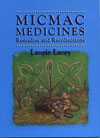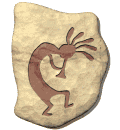|
The collections: Photos of Mikmaw people, their activities (catching and smoking salmon, making baskets, hunting for caribou, moose, bear and other animals). Recollections and voices of the elders. Narratives and photographs, hieroglyphics and petroglyphs, instruments and ageless crafts hold many stories.
Real-size wigwam at the centre of the museum; various objects (ash splints, furs, baskets, bear skin, etc.) evoking everyday life.
Browse through century-old tools and shelters
and experience the importance of the seasons
to the Mi'kmaq people.
Storytelling by Martha Isadore, community elder,
inside the teepee. The site is home to a permanent heritage exhibit
and display of fine Mi'kmaq artifacts,
"Let Us Remember The Old Mi'kmaq"
Mikwitemanej Mikmanaqi'k:
Let Us Remember the Old Mi'kmaq The Robert S. Peabody Museum of Archaeology and The Confederacy of Mainland Mi'kmaq in Truro, Nova Scotia, co-produced this exhibition of photographs taken in Mi'kmaw communities in 1930-31 by anthropologist Frederick Johnson. The images, taken in seven communities in Nova Scotia and Newfoundland, portray many aspects of community life, from people fishing and making baskets to the
annual celebration of St. Anne's Day.
Over two years, exhibition curators met with more that 50 Mi'kmaw elders throughout Nova Scotia to discuss these images. They drew on the memories of these and other present-day Mi'kmaw people, as well as historical information, to provide context for the images within 20th century Mi'kmaw experience.
The exhibition examines Mi'kmaw life in 1930-31, as well as changes brought about by Canadian Indian policy
instituted after 1930.
Some symbols of the Mi'kmaq culture: * The Eagle:
the message coming from Niskam, the Great Spirit.
* The Turtle:
the unspoken - patience, active listening.
* The Great Horned Serpent:
of the supernatural race, he lives in lakes; the horn is the source of his power.
* The Peace Pipe:
peace amongst nations, families and individuals.
* The Medicine Wheel:
the faith and wisdom of the First Nation communities.
Staff Members: Madeleine Isadore, Centre Manager;
Pauline Isadore, Cultural Programmer
Murdena Marshall, B.Ed., Ed. M., Cultural Consultant (customs, traditions, language)
The Board of Directors for the Centre:
Chief Mary Louise Bernard, Chair; Nancy Bernard, Tracey Boutilier, Sylvia Googoo, Martha Isadore, Howard Jeddore, Nancy MacDonald, Jim Morro.

The book "Let Us Remember the Old Mi'kmaq", by the Confederacy of Mainland Mi'kmaq and the Robert S. Peabody Museum of Archeology For sale
at the Centre's Craft Shop
(featuring Mi'kmaq items,
most of which are made locally):
Baskets, beadwork (bookmarkers, necklaces, etc.), earrings, bracelets and hair pins; quill-work,
leather goods (full Mi'kmaq regalia, mocassins, medicine pouches, etc.);
wooden flowers; dream catchers;
original paintings and artwork; cards and postcards, candles;
music CDs (Denny Family, Eagle Feather, Sarah Michael, George Paul, etc.);
and maple syrup.
Some of the books available: 
"Micmac Medicines", by Laurie Lacey
"We Are the Dreamers. Recent and Early Poetry", by Rita Joe
"We Were not Savages", by Daniel N. Paul
"Glooscap Legends", by Stanley T. Spicer
Related museums elsewhere in North America: 
Other Mi'kmaq communities in Cape Breton: Contact information: The Wagmatcook Culture & Heritage Centre
P.O. Box 30029
Wagmatcook, Nova Scotia, CANADA B0E 3N0
(902) 295-2999 or 295-1627
Fax (902) 295-2769 More practical information: Year-round, 7 days a week
9:00 am to 9:00 pm
$2.00 admission fee
Ample parking area. Washrooms, craft shop, restaurant right in the Centre. |